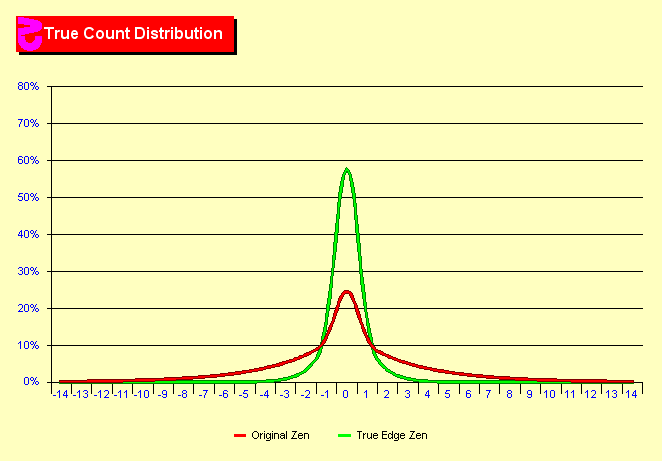person1125
Well-Known Member
I think I understand and want to see if I'm right or completely wrong.
So lets say you have a running count of +20 with 4 decks left. This gives you a TC of +5. Now you convert that to 1/4D TC and you get a value of 0.3125 (your TC/ # of 1/4 decks left) for your 1/4D TC. Now lets say your running count drops to +5 with 1 deck left this again gives you a TC of +5. But now your 1/4D TC is 1.25. From this I would conclude that a TC of +5 with 1 deck left is more to your advantange than it is with 4 decks left, which makes since.
So my next thought is this: if i'm using this information for betting purposes how do i use it? If I make a 1 unit bet for each + TC (not really, just an example) then I would be betting 5 units for each TC above, even if there are 4 decks left or only 1 deck left. But I really should be betting more when there is only 1 deck left, so I am not taking full advantange. So at what value of 1/4D TC do I increase my bet even more?
< 0.5 - same bet
0.5 - 1.0 - increase by 1 unit
>1 increase by 2 units
etc
does anyone have hard numbers as to what value the 1/4D TC should be in order to increase your bet?
So lets say you have a running count of +20 with 4 decks left. This gives you a TC of +5. Now you convert that to 1/4D TC and you get a value of 0.3125 (your TC/ # of 1/4 decks left) for your 1/4D TC. Now lets say your running count drops to +5 with 1 deck left this again gives you a TC of +5. But now your 1/4D TC is 1.25. From this I would conclude that a TC of +5 with 1 deck left is more to your advantange than it is with 4 decks left, which makes since.
So my next thought is this: if i'm using this information for betting purposes how do i use it? If I make a 1 unit bet for each + TC (not really, just an example) then I would be betting 5 units for each TC above, even if there are 4 decks left or only 1 deck left. But I really should be betting more when there is only 1 deck left, so I am not taking full advantange. So at what value of 1/4D TC do I increase my bet even more?
< 0.5 - same bet
0.5 - 1.0 - increase by 1 unit
>1 increase by 2 units
etc
does anyone have hard numbers as to what value the 1/4D TC should be in order to increase your bet?


